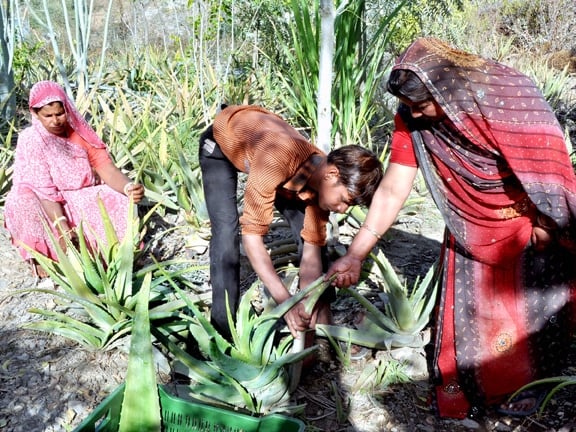
by Purnima Ramakrishnan | Jul 23, 2013 | Casting a Wider Net, Economy, Education, Feminism, Government, Human Rights, Humanity, India, Inspirational, International, Motherhood, Nature, Purnima, Social Good, The Alchemist, United Nations, Women's Rights, World Moms Blog, World Voice
A couple of weeks ago, we featured a remote village, Piplantri (Western India) on the Gates Foundation. Piplantri is a model village, whose actions of change have been very well received all over India.
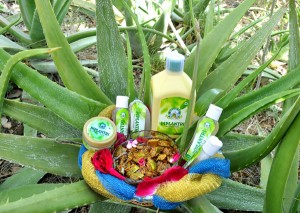
Aloe Vera products from the small scale industries
They plant 111 trees for every girl child who is born, create a fixed deposit of INR 31,000 (approx. USD 620) in her name which attains maturity when she is 18 years old and chalk up a legal agreement between the parents of the girl child and the government that they won’t get their girls married off before she is 18 years old. They also have Aloe Vera industries in which the women of the village are employed. So they have achieved MDGs #3 (promote gender equality and empower women), #4 (reduce child mortality), and #7 (ensure environmental sustainability) at one go. Today on the blog, I would like to introduce Mr. Shyam Sundar Paliwal and his wife, Anita, who were the pioneers of this change action in their village. Anita is 42 years old, and she got married after she finished her 12th grade. It was an arranged marriage and the couple were happy.
Their first daughter Kiran was 18 years old when she passed away. She died due to dehydration. That was the turning point in their life, and they vowed to make lives of others happy.
They also have another daughter Hemanshi (22) and a son Rahul (15) who is in 10th grade. Hemanshi is married and has a child, too.
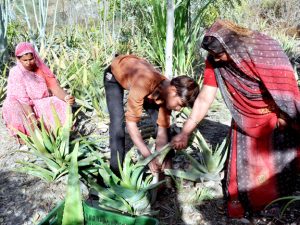
The women of the village tending Aloe Vera
Anita recalls that when she came to her in-laws place after she got married, the first lesson she received from her father-in-law was to plant banana saplings such that they bear fruits during the rainy season and then plant mango saplings around the banana trees. Banana trees absorb water during the monsoon and transfers this water to the mango trees through its roots during the arid summer season. She says she has stuck to this piece of advice to date in her village and ensured that her villagers follow such age-old farming wisdom.
Anita, who is the wife of the ex-sarpanch (ruling political head) of the village, Piplantri, is a very active community member. She is a Zila Parishad Member (Elected person of the district council). Her husband has always been supportive of her as a woman and wants her to do her best for her villagers. He has never restricted her in any way. Though she is more educated than him, he has never been jealous of her, but has only encouraged her and furthered her growth and development as an active member of their society and community. She says, if only all women of the world gets a husband like Shyam, the women of the world will be better off and we would not be speaking of women’s rights here.
Shyam Sundar won the panchayat elections in 2005 and he says he first wanted the people who worked in the government offices to be comfortable. He installed the first AC in the office, brought in some comfortable furniture and ensured that people in all echelons of the society were treated equally. (In rural India, at times, the upper caste people are given more respect and sit on chairs, whereas the lower caste people are treated shabbily and sit down on the floor. Read more about the Evils of Caste system in India here). He said, he worked on the psychology of the ruling body to make them happy and comfortable. He says, only if they are happy, they would start working on reform measures and help provide for the remaining villagers. He, at his own expense, made the offices a comfortable place to work and conducive to provide better results.
He started small. In this difficult water shortage era, he diverted the waste water from all houses/offices towards the fields. Better water conservation was ensured. If waste water does not stagnate anywhere, there would be no mosquitoes and no dengue and fewer diseases. So, he solved primarily problems with simple, cost-effective solutions.
He installed drinking RO water systems in schools. Brought in furniture for the students and made the public schools better than the expensive private schools. People started flocking towards government schools. He raised awareness slowly and in a small way, which evolved out.
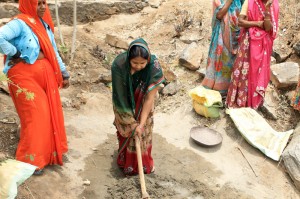
Mrs. Anita Paliwal working on the Water Harvesting Structure
He started rain water harvesting with the help of government. He built canals. He used the women of the village who were unemployed. To the left is a picture of Anita, who at times does not hesitate to get into the fields with a mean sickle. She and her husband were instrumental in starting the water harvesting structure of the village. In most of his welfare activities 90% of the employed are women and 10% alone are men. Women of the village have been blessed indeed to have him there, says Anita. In addition to 25,00,000 Aloe Vera plants, there are 10,000 rose shrubs which are also used in small-scale industries for toiletries and medicinal supplements. Women are employed in all of these schemes.
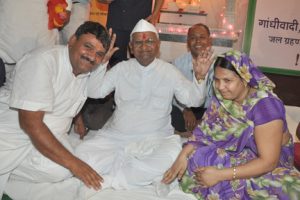
Mr. Shyan Sundar Paliwal and Mrs. Anita Paliwal with Anna Hazare
He started the Kiran Nidhi Yojna with the 76-year-old International Social Activist, Anna Hazare to ensure that no girl child is married off before 18 years old. This man who himself did not study in a college, ensures that all girl children in his village get a college degree. He also nudges the parents to get their girls married off in collective wedding, so that money is conserved and better utilised for other public welfare schemes or for their own savings. This scheme also granted government land to the parents in return for planting 111 trees on the birth of their daughter in that land, and tending to it to fruition before their girl child is 18 years old. On the death of any community member, the family is requested to plant trees again.
He says this again works on their psychology. The girl children treat the trees as their own brothers and sisters. After all, the saplings were planted on the day of their birth. And the parents get emotionally attached to the trees which came into existence on the day their family member was born or died. They then take care of it as a family member, and would under no means cut it down. He says, it is all in the hearts of the people. If people get involved with their hearts, anything is possible. He made people to get emotionally attached to nature and trees and the earth.
I learnt something new from Anita and Shyam that day – Ecofeminism. It is such a beautiful concept. Women and nature have been connected since time immemorial and this couple have harnessed it.
After all, he who was not highly educated could work on such things and make that beautiful village into a heaven, he says, the whole world could change too. And we would have no need to talk about the MDGs or uplifting of any downtrodden society/community.
When asked how he felt when his village was showcased by the Gates Foundation on their Blog, he gushed with happiness and pride. The district collector and Panchayat officials were so excited, too, he said. But his only complaint was that he could not get a hard copy of the magazine which he could show his villagers. He is so proud like a father, like the father of the heaven he created.
He also invites donation to his Kiran Yojna Scheme for the fixed deposit of INR 31000 of every girl child born in his village. He invites the contributors, readers and fans of World Moms Blog to make a trip to Piplantri. He wants people to embrace such change and for them to build upon it to suit their own society, and community.
This is an original post to World Moms Blog by Purnima, our Indian mother writing from Chennai, India. Her contributions to the World Moms Blog can be found here. She also rambles at The Alchemist’s Blog.
Photo credit to Piplantri.com
What do you think about the traditions put in place to support girls and women in the community of Piplantri?
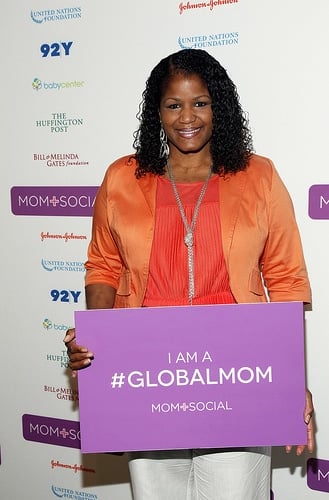
by shootiegirl | Jul 9, 2013 | Motherhood, Social Good, World Voice

LaShaun Martin at the Mom + Social Summit on May 8th, 2013 in New York City.
This past May I was honored to be a speaker for the very first Mom+Social Summit hosted by the United Nations Foundation, Bill and Melinda Gates Foundation, Johnson & Johnson, Huffington Post, Baby Center and 92Y Tribeca in New York City.
I shared several experiences as a Global Mom, but the most difficult one was that of my sweet daughter.
On June 9th, 2012, I happened to be awake on a Saturday morning when I heard something down the hall towards my girls’ rooms. When I went to investigate, I saw my oldest daughter having a grand mal seizure.
This experience shook me to the core with heart-wrenching FEAR I had never experience before. I thought my daughter was dying in front of me!
Instead of going into immediate action, it felt like I stood there for hours watching a movie I had no power to control. When I came out from the fog, I grabbed her, screamed her name, and did everything I could to get her to answer me. When she didn’t, my youngest daughter and I just knew it was the end.
Fortunately, this story has a very happy ending.
With the best doctors and medical care possible, my daughter has been seizure-free since that day.
I am eternally grateful that God saw fit to save MY child that day. But what about all of the other children who suffer with nowhere to turn? No one to rescue them. Parents who can’t afford medical care of even the basic necessities.
My heart bleeds for those children and their future. I want them to have the same experiences and opportunities that my girls have. This is why my goal as a mother is to raise children who think of others and not just themselves. It is my greatest gift to see my girls as “givers” and not “takers.” They have designed t-shirts for Shot@Life – a campaign that raises money for vaccines for children in developing countries, they save their change to donate to several causes, and participate in walks and fundraising for Children’s Hospital. They are the next generation of givers!
Check out my talk at Mom+Social:
How can you teach your children to be givers?
This is an original post to World Moms Blog by our contributor, LaShaun Martin of Shootie Girl in the Washington, DC Metro Area.
Photo credit to Stuart Ramson, UN Foundation.

LaShaun Martin is National Director of Social Media and Community Service for Mocha Moms, Inc. a national 501(c)(3) support group for stay-at-home mothers of color. LaShaun currently works to manage and promote community service programs for the organization to include teen mentoring, Boys Booked on Barbershops literacy program, America’s Promise, MomsRising, Moms Clean Air Force, U.S. Environmental Protection Agency, and U.S. Department of Education. She is a frequent guest of the White House for events focused on women and girls including tea with First Lady Michelle Obama.
LaShaun holds a Bachelor of Science degree in Business Administration. LaShaun spent 20 years with the State of California, the State of Maryland Department of Corrections managing public education, research, FBI programs and later Hewlett Packard. LaShaun now serves as CEO and Designer of her own company, Shootie Girl™ Custom Rhinestone Apparel and Shootie Girl™ Blog – Positive Messages for Women and Girls. Shootie Girl™ designs have been featured with CNN’s Soledad O’Brien, Sherri Shepherd of The View, Carol’s Daughter, Clinique Cosmetics, Jack and Jill of America, Inc., Still Standing Movie, Dr. Sherry Blake of Essence Magazine and Aja Dantzler of R&B singing couple Kindred and the Family Soul and Blogalicious.
LaShaun is passionate about giving back and ensures her company reflects a heart for service by donating many “t-shirts for a cause” to Heart of Haiti, the women of Zimbabwe and The United Nations Foundation Shot@Life Campaign. She also serves on the Advisory Board of MOMentumNation and the Epilepsy Foundation.
LaShaun’s greatest passions are her husband, two lovely daughters and music.
Blog: http://www.shootiegirl.net
Custom Rhinestone Apparel: http://www.shootiegirl.com
More Posts
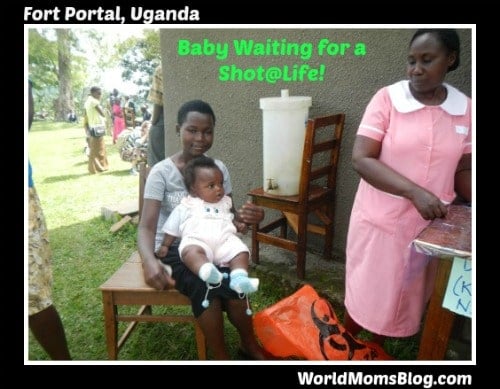
by Jennifer Burden | Jul 2, 2013 | Shot@Life, Social Good, Uganda, World Voice
This is Day 4 of a trip to Uganda with the UN Foundation’s Shot@Life campaign. World Moms Blog founder, Jennifer Burden, was part of the delegation to observe UNICEF’s Family Health Days in October 2012.
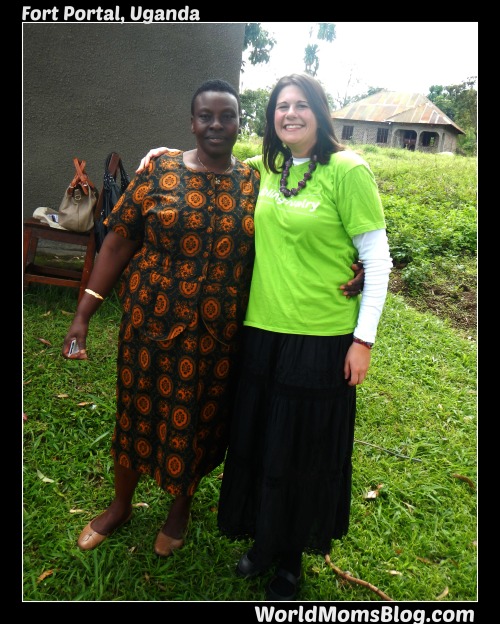
Elizabeth, a volunteer health worker and Ugandan mother who helps to administer life-saving vaccines to children under 5 years old in Fort Portal with World Moms Blog Founder, Jennifer Burden, on a Shot@Life trip to Uganda in October 2012.
At Church in Uganda
Sunday, we rose and prepared for the Family Health Day in the town of Fort Portal, which is about a 4 hour drive from Uganda’s capital, Kampala. Our delegation split in two because there were two Family Health Days within our reach that our group wanted to cover, so some of our group headed to a Catholic Church. I was with the group that was at an Anglican church for a Family Health Day.
It was that day that I met John the Baptist, a man who wished to continue school to become a priest, but economics didn’t allow him to do so. He now worked for the town of Fort Portal and accompanied us on our trip. It turned out John the Baptist has a 6 year old daughter, and she and my own 5 year daughter are becoming pen pals over e-mail. What a fantastic cultural experience that may grow out of this trip for two of the world’s children!
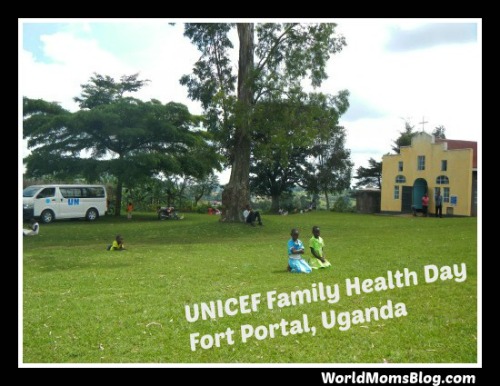
We arrived at a grassy knoll with a church on top of the hill. It was picturesque. The familiar (to me) tune of hymns were coming from the building, and on the outside, the health workers were setting up their stations under trees and outside of buildings. Signs were words scrawled on paper: “HIV Testing Here” “Immunizations for Children Under 5”, etc.
First, Cindy Levin’s curiosity led us all into the mass. We sat on what looked like hand made wooden pews and the church inside was painted sky blue and had what looked like Christmas garland hanging from side to side overhead. The energy of the people singing inside was intense! As the priest spoke in a local African dialect, I was able to follow the mass. Not from what he said, but by the sing-song of his tone. I recognized the “Our Father” and the “The Apostle’s Creed” from my days of growing up as a Catholic, although I currently choose not to practice a religion now.
UNICEF Family Health Day
Afterwards we met with health workers, including a lab technician conducting HIV testing, a nurse midwife, and various volunteers administering vaccines, taking blood pressure and testing for malnutrition in small children. The delegation spent time observing each post, but former Mexican nurse, Felisa Hilbert, took it one step further and helped take blood pressure to the smiles of many people waiting in line.
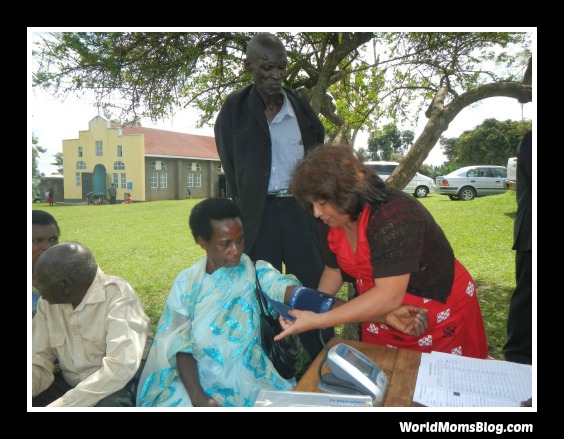
Felisa Hilbert, a former nurse from Mexico, volunteers to take blood pressure during a UNICEF Family Health Day on a Shot@Life trip to Uganda.
Families waited under the shade of large, beautiful trees for their family members who were utilizing the health services. I had the chance to see children receive polio vaccinations.
Interacting with the mothers who were receiving these immunization services for their children was profound for me, after spending almost a year advocating for their children to have access to them.

The people we met in Uganda were curious and open to conversation, and so were we. Having previous been an British colony, English is common in Uganda. Having this common medium, made it possible for our delegation to really experience the local culture and people of Uganda.
I asked so many questions, met so many people and took a lot of notes. The trip has been an asset for me in leading discussions on Twitter for social good for World Moms Blog, for presenting on Shot@Life, in my writing, and in lobbying US Congress on global health and vaccines, talking to friends. But perhaps, it’s greatest impact will be on my daughters due to the multitude of stories I share with them about the children I met in Uganda. My experiences as part of this delegation were so meaningful. Thank you, again, to the UN Foundation and Shot@Life for giving me this great gift that I will continue to share in my advocacy.
This is an original post to World Moms Blog by founder, Jennifer Burden, in NJ, USA. To read more about Jennifer’s trip with Shot@Life to Uganda, check out Day 1 about UNICEF offices in Kampala, Uganda, Day 2 of her trip at a UNICEF Family Health Day in Mumbende, Uganda and Day 3 about signs of poverty.
Photo credits to the author.

Jennifer Burden is the Founder and CEO of World Moms Network, an award winning website on global motherhood, culture, human rights and social good. World Moms Network writes from over 30 countries, has over 70 contributors and was listed by Forbes as one of the “Best 100 Websites for Women”, named a “must read” by The New York Times, and was recommended by The Times of India.
She was also invited to Uganda to view UNICEF’s family health programs with Shot@Life and was previously named a “Global Influencer Fellow” and “Social Media Fellow” by the UN Foundation. Jennifer was invited to the White House twice, including as a nominated "Changemaker" for the State of the World Women Summit. She also participated in the One Campaign’s first AYA Summit on the topic of women and girl empowerment and organized and spoke on an international panel at the World Bank in Washington, DC on the importance of a universal education for all girls. Her writing has been featured by Baby Center, Huffington Post, ONE.org, the UN Foundation’s Shot@Life, and The Gates Foundation’s “Impatient Optimists.” She is currently a candidate in Columbia University's School of International and Public Affairs in the Executive Masters of Public Affairs program, where she hopes to further her study of global policies affecting women and girls.
Jennifer can be found on Twitter @JenniferBurden.
More Posts - Website
Follow Me:


by Mama Mzungu (Kenya) | Jun 19, 2013 | Casting a Wider Net, Cultural Differences, Grandparent, Interviews, Life Balance, Motherhood, Parenting, Social Good, Traditions, Uncategorized, World Motherhood, World Voice
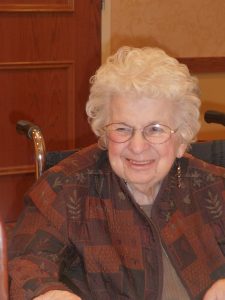
Our “Casting a Wider Net” series features mothers around the world whose voices have typically been excluded from the blogosphere, due to lack of access to the internet, low literacy or poverty. This feature aims to include their important and distinct perspectives with interviews and occasional video clips.
My grandmother, even at 91, never ceases to amaze me. She has fought back from accidents and illness, car wrecks and strokes, with unexpected strength and optimism, probably from a deep drive to feel fully engaged in the world. When my grandfather, the love of her life, widowed her over 30 years ago, she saw past her grief to discover new joys, taking up folk dancing and beginning a new career as a pre-school teacher. Today, her hands shake, the result of essential tremors, but that was beside the point when she decided to take up pottery – a unquestionably physical art form – in her 8th decade of life. Her brightly colored ceramic creations fill her small apartment and she makes gifts of them for her 5 grandchildren and growing brood of “greats.”
But it’s not just her zest that draws you in. She’s warm, the kind of woman it’s easy to open up to, a good listener and curious question-asker. It’s probably this quality, along with her undeniably sweet demeanor, that has kept her in companionship since my grandfather passed. And it’s this quality that made me want to turn the tables and ask her questions. (more…)
Originally from Chicago, Kim has dabbled in world travel through her 20s and is finally realizing her dream of living and working in Western Kenya with her husband and two small boys, Caleb and Emmet. She writes about tension of looking at what the family left in the US and feeling like they live a relatively simple life, and then looking at their neighbors and feeling embarrassed by their riches. She writes about clumsily navigating the inevitable cultural differences and learning every day that we share more than we don’t. Come visit her at Mama Mzungu.
More Posts - Website
Follow Me:


by Nicole Melancon (USA) | Jun 18, 2013 | 2013, India, Social Good, Third Eye Mom, Uncategorized, World Voice
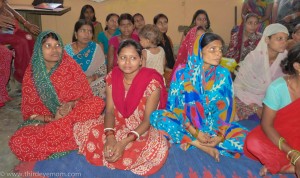
A pregnant mothers group at one of the slums served by Save the Children. Photo By Nicole Melancon
At the end of May I had the honor of traveling to India along with Jennifer James, founder of Mom Bloggers for Social Good, a global coalition of mom bloggers who use our voice through blogging and social media to spread awareness, education and support to the various NGOs around the world that are making a difference.
The purpose of our trip to India was to meet face to face with some of our partner NGOs and see firsthand some of the issues we cover as part of Mom Bloggers for Social Good: Maternal and newborn health, food and water poverty, sanitation issues, and education for women and girls.
Although this was not my first time to India (I had visited India a few years ago as a tourist) it was my first time going in a much different role: As a social good blogger and advocate. Seeing India in a different framework was utterly life changing.
India is perhaps one of the most fascinating places I’ve ever been and with its enormous population, and sensational culture comes issues that are often overwhelming to comprehend. Most people are aware of the huge inequities and poverty strangling India. Although India has seen rapid economic growth over the last decade, the gap between rich and poor has become even wider and more profound. As migrant families leave their villages in rural India and come to the big cities in search for a better life, the growth of urban slums, many in deplorable conditions, continues at unmanageable rates. In just Delhi alone, there are thousands of them. And as almost half a million migrants come to Delhi alone each year, many of them end up populating the already over-crowded urban slums that can be found all throughout the city, even alongside some of Delhi’s most expensive neighborhoods.
Our mission in India was to visit the heart of Delhi’s slums to see the issues firsthand and meet with our partner NGOs who are on the ground and making a difference in people’s lives.
It was not an easy trip. The weather was scorching hot with highs nearing 120 degrees Fahrenheit and visiting an urban slum in itself is heartbreaking and shocking. Although I’ve experienced poverty many times before in my travels I wasn’t prepared for the enormous magnitude of desperation that I found in India.
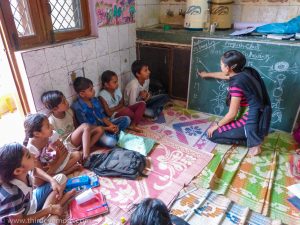
Girls learning at Pratham. Photo by Nicole Melancon
The highlight of our entire trip happened on our first day. We met with a small Indian non-profit organization called Protsahan. Founded by young Indian social entrepreneur Sonal Kapoor, Protsahan, uses a unique approach to teaching and inspiring young, underprivileged girls who come from some of the most tragic circumstances possible. All are poor, and many have been abused and have little opportunity to get an education or a way out of the poverty they were born into. Protsahan, which means “encouragement” uses the arts as a means to inspire, teach and motivate the girls to learn and strive for a brighter future. It was a heartwarming experience meeting Sonal and the girls that were striving to succeed and climb out of poverty. I left wishing we could stay longer. The love and tenderness of Sonal for the girls was overwhelming and made me realize that anyone can make a difference in the world and impact the lives of others.
Our second day was spent visiting another education-focused NGO called Pratham, which is the largest NGO working in India to provide quality education to the country’s millions of underprivileged children. We visited a Hub Center supporting 150 children that was located in a slum in Trilokpuri, East Delhi. The program model was slightly different from Protsahan as the classes were co-ed and also were offered for a minimal, yet affordable fee. Classes began at preschool age and continued on to more advanced English as well as vocational courses. What makes Pratham so unique is its approach to working with the government to create change.
Our final day was spent visiting two big NGOs, Save the Children and WaterAid, where we were able to do two field visits to different urban slums to see their work. In the morning , we visited some of Save the Children’s projects within the Okhla Industrial Area that hosts garment factories, home to over thousands of families living in unauthorized slums. Save the Children provides a variety of services to the slum such as a mobile health van where people can receive basic health care services, medication, and prenatal and newborn health check-ups which is extremely important in cutting maternal and newborn mortality rates. We also attended one of the weekly meetings for pregnant mothers where they are taught the skills needed to ensure their children’s survival.
We ended our day with WaterAid, an NGO that works all over the world to provide safe drinking water and sanitation services.
Ironically, we visited an unauthorized slum built right outside the lush, grand American Embassy.
Unauthorized slums are by far the most devastating places to live. Many do not have running water or sewer systems, which significantly threatens the health and livelihood of the people. At the Vivekanansa slum, we toured one of WaterAid’s Community Toilet Compounds (CTC) which provides safe, clean toilets to the hundreds of families that live in the community. WaterAid operates 78 CTCs all over Delhi as well as CTCs throughout India. The importance of having a CTC cannot be understated. Not only does it provide dignity, it also helps stop serious diseases which kills many children each year.
I left India feeling intense emotions. There were so many enormous issues that at times it was completely overwhelming. Yet, meeting some of the NGOS and people on the ground who are saving lives and making the world a better place, sometimes one person at a time, inspired hope that change can be made.
This is an original World Moms Blog post written by Nicole Melancon of ThirdEyeMom .
Have you been to India, or experienced the juxtaposition of these types of extremes?

Third Eye Mom is a stay-at-home mom living in Minneapolis, Minnesota with her two children Max (6) and Sophia (4). Her children keep her continually busy and she is constantly amazed by the imagination, energy and joy of life that they possess! A world wanderer at heart, she has also been fortunate to have visited over 30 countries by either traveling, working, studying or volunteering and she continues to keep on the traveling path.
A graduate of French and International Relations from the University of Wisconsin Madison, where she met her husband Paul, she has always been a Midwest gal living in Minnesota, Wisconsin and Chicago. This adventurous mom loves to be outside doing anything athletic (hiking, running, biking, skiing, snowshoeing or simply enjoying nature), to travel and volunteer abroad, to write, and to spend time with her beloved family and friends.
Her latest venture involves her dream to raise enough money on her own to build and open a brand-new school in rural Nepal, and to teach her children to live compassionately, open-minded lives that understand different cultures and the importance of giving back to those in need. Third Eye Mom believes strongly in the value of making a difference in the world, no matter how small it may be. If there is a will, there is a way, and that anything is possible (as long as you set your heart and mind to it!).
Visit her on her blog, Thirdeyemom, where she writes about her travels and experiences in other lands!
More Posts
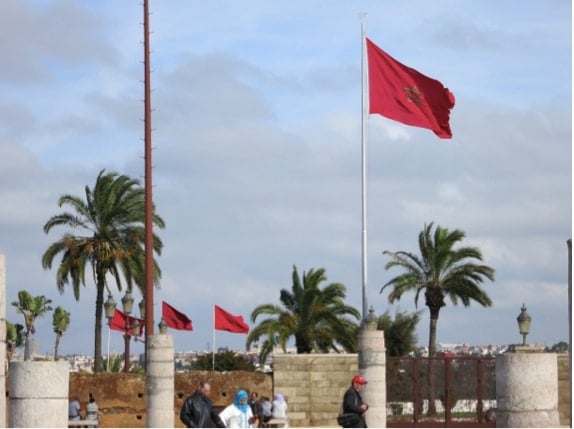
by Jennifer Prestholdt (USA) | Jun 11, 2013 | 2013, Human Rights, International, Morocco, World Moms Blog, World Voice

Photo by Jennifer Prestholdt
Hidden Child Labor
While millions of tourists visit Morocco every year, very few are aware of a hidden human rights abuse that is occurring behind closed doors in Morocco’s cities. Morocco has one of the worst child domestic labor problems in North Africa. The International Labour Organization (ILO) has estimated that between 66,000 and 88,000 children between the ages of 7 and 15 – 70% of whom are under age 12 – are working as domestic servants in Morocco.
These children work long hours for little pay and often suffer physical and other forms of abuse. Because domestic work is “women’s work” in Morocco, virtually all of these child domestic workers are girls. In Morocco (a country with a French colonial history), these child domestic workers are called petites bonnes or “little maids”.
I had the opportunity to learn more about the petites bonnes issue during a recent trip to Morocco. The United States Department of Labor’s Bureau of International Labor Affairs describes the problem like this:
Young girls are sent to work as live-in domestic servants, often before they reach age 10. Parents sell their daughters or receive payment of wages in exchange for their daughters’ service. These petites bonnes (little maids) often face conditions of involuntary servitude, including long hours without breaks; physical, verbal and sexual abuse; withheld wages and even restrictions on their movement. Frequently, they are sent from rural villages to more urban areas, and find it difficult to make their way home. Most petites bonnes are denied an education, and illiteracy rates are high among this population.
The Difficult Life of a Petite Bonne
The situation of petites bonnes in Morocco results from a combination of poverty, gender inequality, and lack of access to education. Girls – some as young as my own 8-year-old daughter – are sent to work as petites bonnes to generate income to support their families. They come from poor rural areas to work in cities such as Casablanca, Rabat, Marrakech, Tangiers, Agadir, and Fes. Intermediaries generally broker the arrangement, receiving a fee from the employer. Petites bonnes interviewed by Human Rights Watch reported that their employers frequently beat and verbally abused them, denied them the chance to go to school, and sometimes even refused to provide them with adequate food and sleeping facilities.
In a strange city, separated from their families and often speaking a Berber language instead of the Arabic spoken by a majority of Moroccans, many petites bonnes are extremely isolated and vulnerable. The isolation, along with the privacy of the homes, increases the chance of sexual abuse by male members of their employers’ household. In fact, several studies have found that many unwed young mothers in shelters in Morocco were petites bonnes when they became pregnant.
The difficult life of a petite bonne sometimes ends tragically. The widely reported story of little Khadija, an 11-year-old petite bonnewho was beaten to death by her employer in July 2011, raised calls for the government to take action on the issue. In January 2013, a 17 year old petite bonne in Casablanca attempted suicide by jumping from the fourth floor of her employers’ home. Amateur video of the suicide attempt that was circulated on the internet shocked Moroccans. Most recently, on March 24, 2013, a young domestic worker was taken to the hospital in Agadir with third degree burns on multiple parts of her body. Only 14 years old, she died from the injuries allegedly inflicted by her employers, prompting a UN representative in Morocco to decry child domestic labor by girls as “one of the worst forms of child exploitation” and call on the government to take action. Yet, thousands of petites bonnes in Morocco continue to suffer in silence.
Gaps in Legal Protection
According to NGOs working to help petites bonnes in Morocco, part of the problem relates to gaps in and difficulties with implementation of Moroccan laws. While Moroccan law prohibits employment of children under the age of 15, Morocco’s Labor Code does not apply to domestic work. Therefore, the Labor Codes’ protections for workers regarding hours worked (44 hours per week) and pay (2,333 dirhams or approximately $261 per month) do not apply. Human Rights Watch has documented that petites bonnes work long hours, often seven days a week. They earn an average of 545 dirhams (approximately $61) per month, but some earn as little as 100 dirhans (approximately $11).
In addition, Morocco ratified the Convention on the Rights of the Child (CRC) in 1993 and the ILO Convention No 182 on the Worst Forms of Child Labor. Both international treaties prohibit economic exploitation and employment of children in work that is likely to be hazardous, interfere with their education, or harm their health, safety or development. Unfortunately, neither have been implemented in a way that provides adequate protection to the petites bonnes.
Some Progress in Protecting Children
There is some indication that things are starting to change in Morocco. The government and international human rights organizations report that the number of girls working as petites bonnes is declining. This is due in part to the fact that public awareness about the problems faced by petites bonnes has been raised because of increased media attention to the issue and public education campaigns undertaken by the Moroccan government, NGOs, and United Nations agencies. The Moroccan government has also taken steps to increase school enrollment and this has helped reduce the number of children engaged in child labor.
Yet still more needs to be done. Since 2006, the government has been working on a draft law on domestic work that would for the first time establish a legal framework to better protect petites bonnes, secure rights such as a weekly day of rest and annual leave, and impose sanctions on employers. The Moroccan government has said that the draft Law on Domestic Workers is one of its priorities, but the bill has not yet been considered and passed by Parliament.
Take Action on June 12 – World Day Against Child Labour!
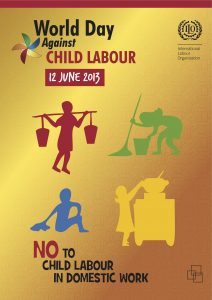 The problem of child domestic workers is not unique to Morocco. In fact, there are an estimated 15.5 million child domestic workers worldwide. The widespread use of children as domestic servants is one of the most hidden forms of child labor.
The problem of child domestic workers is not unique to Morocco. In fact, there are an estimated 15.5 million child domestic workers worldwide. The widespread use of children as domestic servants is one of the most hidden forms of child labor.
The exploitation of children, particularly girl domestic workers like petites bonnes, is a serious violation of children’s rights. It perpetuates inequality and inter-generational poverty, and deprives girls of their right to education, health, participation and protection. It also prevents children from acquiring the life skills and education necessary to improve their future.
To draw attention to the issue of child labor, the United Nations has recognized June 12 as the World Day Against Child Labour. In 2013, the focus is on child domestic workers like the petites bonnes of Morocco. On the 2013 World Day Against Child Labour, the international community is calling for legislative and policy reforms to ensure the elimination of child labor in domestic work and the provision of decent work conditions and appropriate protection to young workers in domestic work who have reached the legal working age. In Morocco, the government should:
• Strictly enforce the minimum age of 15 for all employment (including domestic work) and ensure that all children (particularly girls) enjoy the right to free and compulsory basic education;
• Adopt a domestic worker law that ensures compliance with the 2011 ILO Convention 189 on decent work for domestic workers
• Create an effective system for identifying, removing and rehabilitating child domestic workers from illegal or abusive employment.
• Criminally prosecute individuals responsible for violence or other criminal offenses against child domestic workers.
In addition, the World Day Against Child Labour provides the opportunity for all of us to take action to build the worldwide movement against child labor.
Take Action to end child labor. Learn what you can do to inform yourself and raise awareness in your community. The ILO’sSCREAM (Supporting Children’s Rights through Education, the Arts and Media) programme has factsheets, presentations, postcards, poems, and more. The SCREAM education pack is available in multiple languages.
Join the 12to12 to End Child Labour community. Learn more about the issue and join the 12to12 Community Portal, which provides a common platform for experience and knowledge sharing on research, activities and events related to the World Day Against Child Labour.
Find out what kids and teens can do to help. The ILO’s Youth in Action against Child Labour campaign has ideas, information, videos and other resources to help young people take action to end child labor.
Make a pinwheel with your kids. The pinwheel has become the symbol of the international fight against child labor. The pinwheel campaign to raise awareness about child labor began in Brazil in 2004. The five blades of the pinwheel represent the different continents of the world and the wind that makes the pinwheel spin is the will to act and to pass on the message until all countries take adequate measures to end child labor. Download a kit to make a pinwheel to keep the movement going!
This is an original World Moms Blog post written by Jennifer Prestholdt.
Were you aware of the international child labor issue? Does it exist in the country in which you live?

Jennifer Prestholdt is a lawyer and the Deputy Director of The Advocates for Human Rights, a volunteer-based human rights organization that works locally, nationally and internationally. Her work in human rights takes her around the world, but she spends most of her time in Minneapolis, MN, where she lives with her children (two sons and one daughter), her husband, an elderly cat and a dwarf hamster.
As Jennifer’s kids are now all in school (1st, 4th and 6th grades), she is finally finding more time to do the things that she used to love to do, especially running, writing and knitting. Jennifer loves to travel and has had the dubious distinction of having been accidentally locked in a bathroom on five continents so far. Australia and Antarctica await!
In January 2011, Jennifer made a New Year’s Resolution to start writing about her experiences in order to share with her children the lessons learned from 15 years of work in human rights. The result is her personal blog, The Human Rights Warrior. The name comes from her son Simon, who was extremely disappointed to learn that his mother is a lawyer, not a warrior.
You can find her on her blog The Human Rights Warrior or on Twitter @Jprestholdt.
More Posts





























